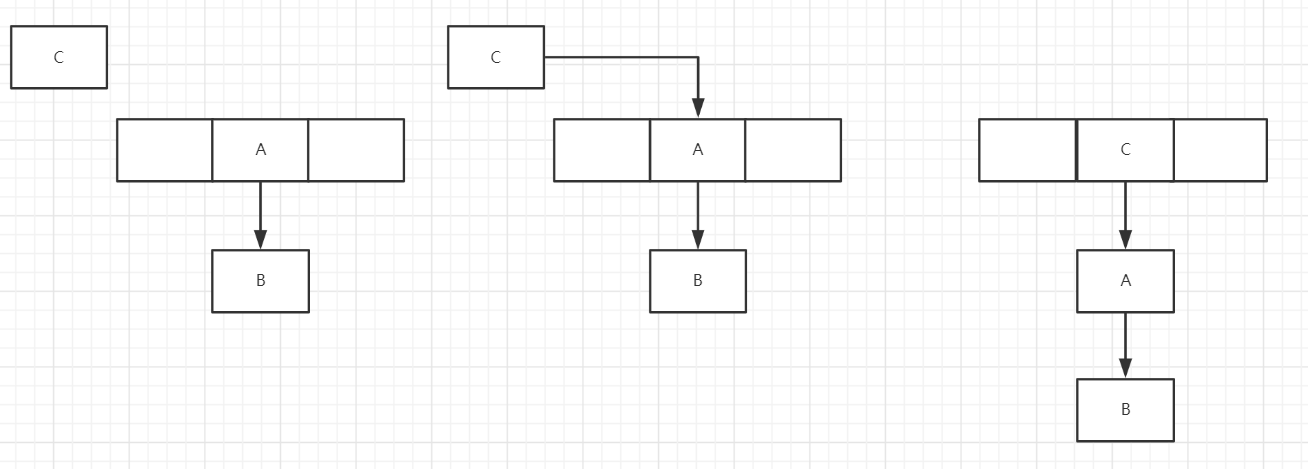概述
HashMap基于Map接口实现,元素以键值对的方式存储,并且允许使用null 建和null值,因为key不允许重复,因此只能有一个键为null,另外HashMap不能保证放入元素的顺序,它是无序的,和放入的顺序并不能相同。HashMap是线程不安全的。
继承关系
public class HashMap<K,V>extends AbstractMap<K,V>
implements Map<K,V>, Cloneable, Serializable
基本属性
static final int DEFAULT_INITIAL_CAPACITY = 1 << 4; //默认初始化大小 16
static final float DEFAULT_LOAD_FACTOR = 0.75f; //负载因子0.75
static final Entry<?,?>[] EMPTY_TABLE = {}; //初始化的默认数组
transient int size; //HashMap中元素的数量
int threshold; //判断是否需要调整HashMap的容量
//threshold在inflateTable函数中会置为
//threshold = (int) Math.min(capacity * loadFactor, MAXIMUM_CAPACITY + 1);
HashMap由数组和链表来实现对数据的存储
HashMap采用Entry数组来存储key-value对,每一个键值对组成了一个Entry实体,Entry类实际上是一个单向的链表结构,它具有Next指针,可以连接下一个Entry实体,以此来解决Hash冲突的问题。
- 数组存储区间是连续的,占用内存严重,故空间复杂的很大。但数组的二分查找时间复杂度小,为O(1);数组的特点是:寻址容易,插入和删除困难;
- 链表存储区间离散,占用内存比较宽松,故空间复杂度很小,但时间复杂度很大,达O(N)。链表的特点是:寻址困难,插入和删除容易
计算hash方式
final int hash(Object k) {
//这一部分是为了减少设计不好的字符串hash,多个字符串得到相同hash值
int h = hashSeed;//初始是0
if (0 != h && k instanceof String) {
return sun.misc.Hashing.stringHash32((String) k);
}
h ^= k.hashCode();
//下面这一部分是为了减少冲突,最多冲突(链表长度)约为8的意思
// This function ensures that hashCodes that differ only by
// constant multiples at each bit position have a bounded
// number of collisions (approximately 8 at default load factor).
h ^= (h >>> 20) ^ (h >>> 12);
return h ^ (h >>> 7) ^ (h >>> 4);
}
//下面是为了让这个hash值转为数组下标,length是2的幂,减一之后位数0之后的都是1,与操作之后刚好在0到length-1下面
/**
* Returns index for hash code h.
*/
static int indexFor(int h, int length) {
// assert Integer.bitCount(length) == 1 : "length must be a non-zero power of 2";
return h & (length-1);
}
插入元素是头插法
插入的Entry的next指向数组中当前位置,然后下移这一部分,让插入的Entry为数组当前位置

public V put(K key, V value) {
//数组为空的时候
if (table == EMPTY_TABLE) {
inflateTable(threshold);
}
if (key == null)
return putForNullKey(value);
int hash = hash(key);
int i = indexFor(hash, table.length);
for (Entry<K,V> e = table[i]; e != null; e = e.next) {
Object k;
////如果key在链表中已存在,则替换为新value
if (e.hash == hash && ((k = e.key) == key || key.equals(k))) {
V oldValue = e.value;
e.value = value;
e.recordAccess(this);
return oldValue;
}
}
//快速失败机制?,比如在遍历的时候中途add就会报错
modCount++;
addEntry(hash, key, value, i);
return null;
}
void addEntry(int hash, K key, V value, int bucketIndex) {
//如果size超过threshold以及当前这个bucket桶非空,则扩充table大小。再散列,然后用新的table.length求下标,新的table.length会在首部多一个1,那么求下标函数的时候就会用到hash值的多一位,然后进行&运算,这个时候就可能把一个链表的有些元素移到后面新增的bucket上面去
if ((size >= threshold) && (null != table[bucketIndex])) {
resize(2 * table.length);
hash = (null != key) ? hash(key) : 0;
bucketIndex = indexFor(hash, table.length);
}
createEntry(hash, key, value, bucketIndex);
}
void createEntry(int hash, K key, V value, int bucketIndex) {
Entry<K,V> e = table[bucketIndex];
table[bucketIndex] = new Entry<>(hash, key, value, e);
size++;
}
扩容resize函数内部的transfer函数时候会倒序,从而在多线程环境下有成环的问题
见https://www.bilibili.com/video/BV1vE411v7cR?p=4
已经下载存在E盘,视频是很乱的,只需看前几节
void resize(int newCapacity) {
Entry[] oldTable = table;
int oldCapacity = oldTable.length;
if (oldCapacity == MAXIMUM_CAPACITY) {
threshold = Integer.MAX_VALUE;
return;
}
Entry[] newTable = new Entry[newCapacity];
transfer(newTable, initHashSeedAsNeeded(newCapacity));
table = newTable;
threshold = (int)Math.min(newCapacity * loadFactor, MAXIMUM_CAPACITY + 1);
}
void transfer(Entry[] newTable, boolean rehash) {
int newCapacity = newTable.length;
for (Entry<K,V> e : table) {
while(null != e) {
Entry<K,V> next = e.next;
if (rehash) {
e.hash = null == e.key ? 0 : hash(e.key);
}
int i = indexFor(e.hash, newCapacity);
//就是下面这几行会导致逆序
e.next = newTable[i];
newTable[i] = e;
e = next;
}
}
}